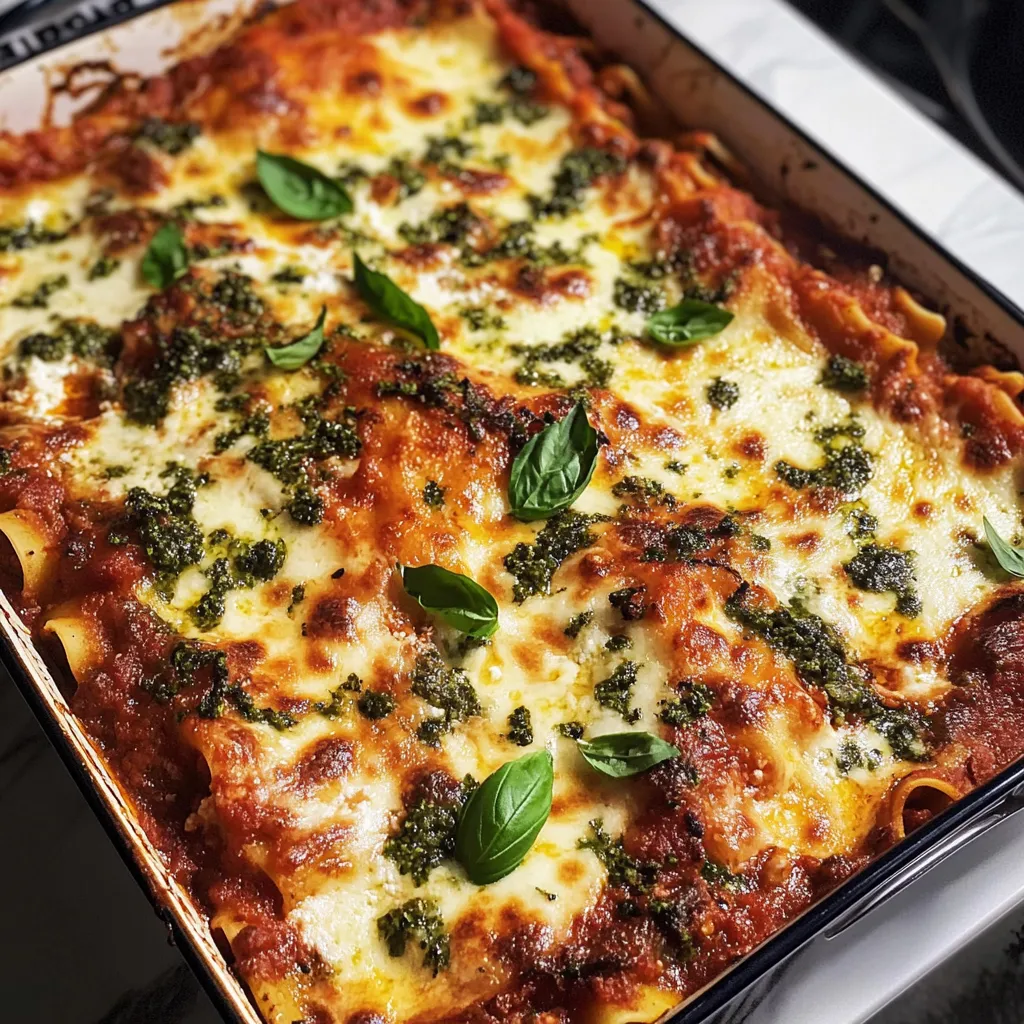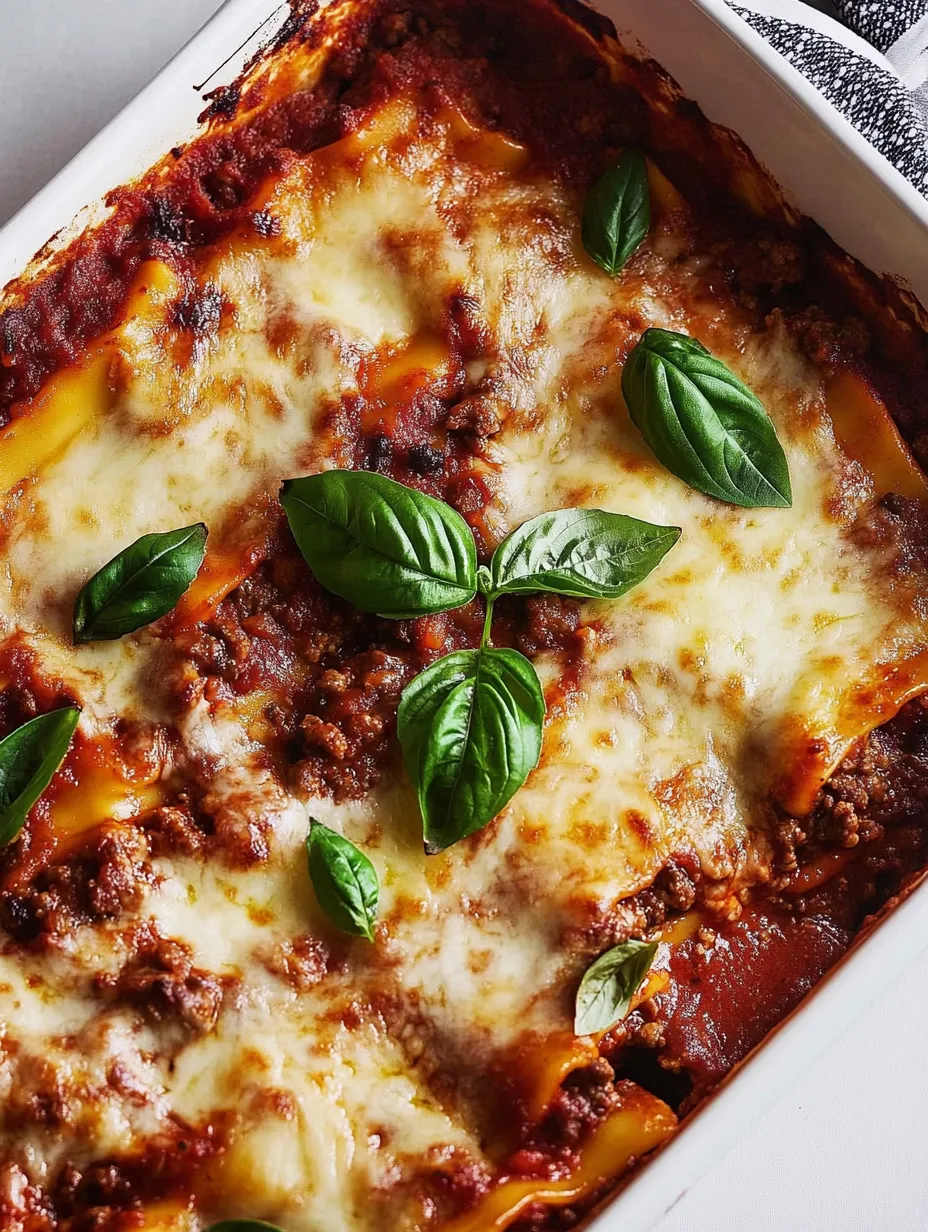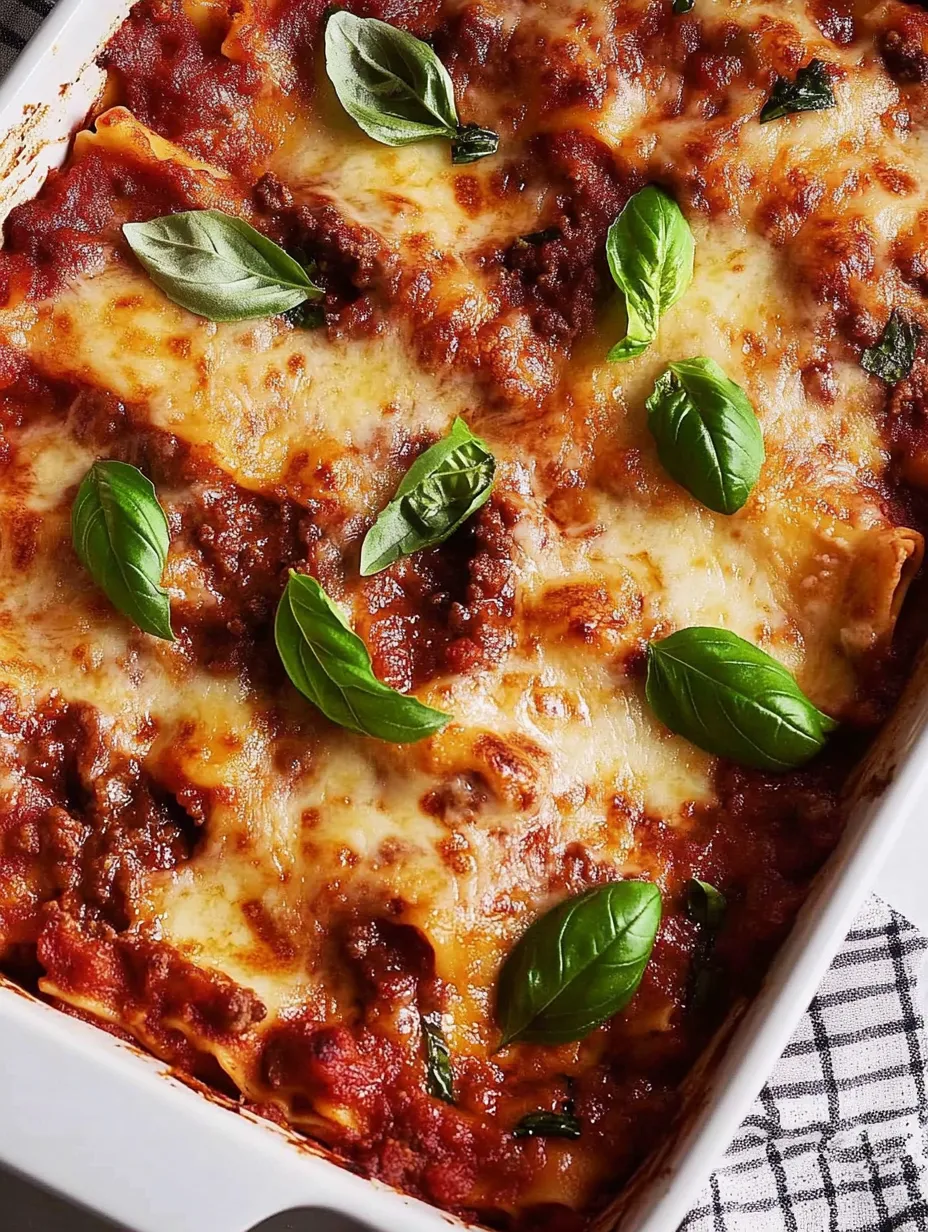 Pin it
Pin it
Authentic Italian lasagna transforms ordinary ingredients into an extraordinary culinary experience through the careful layering of flavors and textures. This version elevates the classic comfort food with a blend of four distinct cheeses and two unexpected secret ingredients that bring brightness and depth to every bite. The result is a lasagna that balances richness with surprising notes of freshness—a dish that honors Italian tradition while incorporating thoughtful twists that make it truly memorable.
I discovered the magic of adding lemon zest and goat cheese to lasagna during a cooking trip to northern Italy. My host family's nonna pulled me aside while preparing Sunday dinner and shared her piccoli segreti—little secrets—that had been passed down for generations. When I returned home and recreated the dish, my Italian-American father-in-law took one bite and fell silent. After a long moment, he looked up and said, This tastes like my mother's. From a man who had spent decades claiming no lasagna could match his childhood memories, I consider this the highest possible compliment.
Essential Ingredients
- Dual Meats: Combination of ground beef and Italian sausage for savory depth
- Whole Milk Ricotta: Creamier and lighter than cottage cheese
- Fresh Mozzarella: Creates cheese pulls and melts perfectly
- Secret Ingredients: Lemon zest and goat cheese brighten rich flavors
- Fresh Herbs: Balance richness with brightness
 Pin it
Pin it
Crafting the Lasagna
- Meat Sauce Foundation:
- Brown beef/sausage, simmer with tomatoes, herbs, and spices for 30 minutes
- Cheese Mixture Innovation:
- Combine ricotta, goat cheese, egg, Parmesan, lemon zest, and parsley
- Noodle Preparation:
- Par-cook traditional noodles or use oven-ready variety
- Layering Architecture:
- Alternate sauce, noodles, ricotta mixture, mozzarella, and Parmesan
- Baking Perfection:
- Bake covered 40 minutes, uncovered 15-20 minutes. Rest 15 minutes before slicing
My Italian grandmother shook her head at the lemon zest and goat cheese. Non è tradizionale, she muttered. After tasting it, she quietly asked for the recipe—the ultimate validation from someone who had made lasagna for six decades. Innovation within tradition creates magic.
Serving Suggestions
Pair with arugula salad and lemon vinaigrette. Serve garlic bread to mop up sauce. Choose Chianti or Montepulciano d'Abruzzo wine. Let cool slightly for clean slices.
Creative Variations
- Vegetarian: Use mushrooms, spinach, and bell peppers
- No Goat Cheese: Substitute extra ricotta with lemon juice
- Gluten-Free: Certified GF noodles and ingredients
- Summer Version: Add fresh basil to sauce and cheese
 Pin it
Pin it
Storage Strategy
Refrigerate components separately up to 3 days. Assemble and freeze unbaked lasagna for 3 months. Add 15-20 minutes baking time if chilled.
This lasagna became our family anchor during tough times. The layered preparation process brought calm, while shared meals fostered connection—proof that food’s true magic lies in uniting people, not just ingredients.
Frequently Asked Questions
- → What makes this lasagna recipe authentically Italian?
- This recipe incorporates several authentic Italian elements that distinguish it from Americanized versions. The inclusion of goat cheese alongside ricotta creates a more complex flavor profile common in regional Italian cooking. The meat sauce is carefully built with proper technique—sautéing aromatics first, browning meats thoroughly, and allowing for a long, slow simmer to develop depth. Additionally, the use of lemon zest is a traditional Mediterranean technique to brighten dairy-based fillings without overpowering them. While some authentic Italian lasagnas use béchamel instead of ricotta, this recipe represents the style found in southern Italian and Italian-American households while maintaining traditional layering techniques and flavor balance.
- → Can I make this lasagna ahead of time?
- Yes, this lasagna is perfect for make-ahead preparation! You have several options: 1) Prepare the sauce up to 3 days in advance and refrigerate in an airtight container; 2) Assemble the entire lasagna a day before, cover tightly with plastic wrap and refrigerate—just add 10-15 minutes to the baking time; 3) Bake the lasagna completely, cool, and refrigerate for up to 3 days—reheat covered at 350°F for about 30 minutes; 4) Freeze the unbaked assembled lasagna for up to 3 months—thaw overnight in the refrigerator before baking. For best results when making ahead, wait to add the final layer of shredded mozzarella until just before baking. The flavor actually improves when made a day ahead as the ingredients have time to meld.
- → Can I substitute the goat cheese if I don't have it or don't like it?
- While the goat cheese adds a distinctive tanginess that enhances the ricotta filling, you can certainly substitute it if preferred. Mascarpone cheese makes an excellent alternative, creating an ultra-creamy, slightly sweeter filling. Cream cheese will also work, though it's denser, so use about 2-3 ounces and allow it to soften thoroughly. Another authentic option is to use cottage cheese that has been pulsed in a food processor until smooth. If you simply want to omit the goat cheese without replacement, increase the ricotta by about 4 ounces and consider adding an extra tablespoon of grated Parmesan to maintain the flavor complexity. Whatever substitute you choose, the lemon zest becomes even more important to provide the brightness that the goat cheese would have contributed.
- → Why do you add lemon zest to the ricotta filling?
- The lemon zest is one of the 'secret ingredients' that elevates this lasagna without making it taste lemony. It serves several culinary purposes: 1) It brightens the heavy dairy components, cutting through the richness of multiple cheeses; 2) It enhances the natural flavors of both the ricotta and goat cheese without overpowering them; 3) It adds complexity to the overall dish, creating a more balanced flavor profile. The aromatic oils in lemon zest provide fresher flavor than the juice would, without adding unwanted moisture to the filling. It's a technique often used in Mediterranean cooking, where a small amount of citrus zest is added to enhance rather than dominate. Start with just 1 teaspoon as suggested if you're hesitant, but most people find it's a subtle enhancement they can't quite identify but definitely appreciate.
- → Is it necessary to use both fresh and shredded mozzarella?
- Using both types of mozzarella serves a specific purpose in this recipe. Fresh mozzarella, with its higher moisture content and milky flavor, melts into pockets of creaminess within the lasagna layers. Shredded part-skim mozzarella, which has less moisture, creates that perfect golden-brown, slightly chewy top layer and helps bind the lasagna together. While you could use just one type in a pinch, the combination provides the ideal balance of texture and flavor. If you must choose just one, use shredded mozzarella for better structure, especially if you'll be serving the lasagna soon after baking. If you only have fresh mozzarella, drain it very well, slice it thinly rather than tear it, and expect a slightly softer lasagna that benefits from additional resting time before serving.
- → Why should I let the lasagna rest for 15 minutes before serving?
- The 15-minute resting period is crucial for several reasons: 1) It allows the molten cheese to set slightly so the lasagna holds its shape when cut, rather than spreading across the plate; 2) It gives the noodles time to absorb any excess moisture, preventing a soupy texture; 3) Most importantly, it allows the flavors to settle and meld together—when too hot, your taste buds can't fully appreciate the complexity of flavors. Think of it like resting a steak after cooking. During this time, the temperature remains hot enough for serving but drops just enough to improve texture and flavor. For the cleanest slices, use a very sharp knife and wipe it clean between cuts. While it might be tempting to dig in immediately, those 15 minutes of patience will be rewarded with a superior eating experience.
